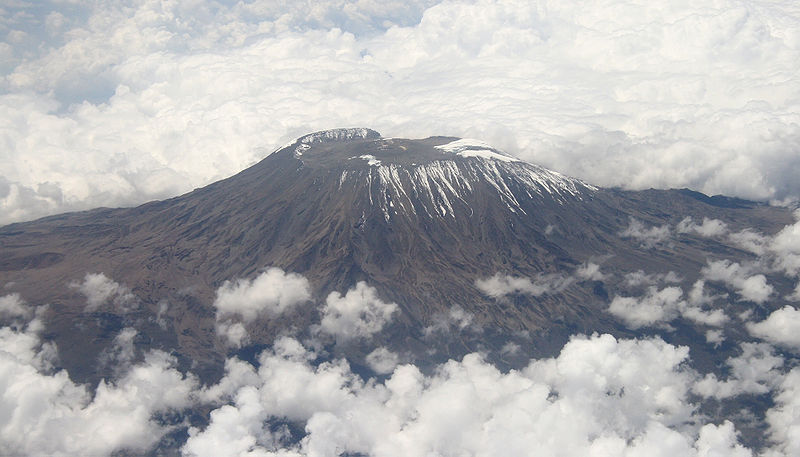Mount Kilimanjaro, Earth's highest free-standing peak, projects nearly 20,000 feet into the African sky, towering above the plains and valleys below.
Mount Agamenticus projects as well, but to a decidedly lesser 700 feet. Despite the clear difference in stature, the two mountains have a lot in common.
 |
| Mount Kilimanjaro in the Distance |
The
East African Rift Valley is slowly growing wider, tearing the African continent apart at the Earth's seam. At its center the warm interior of the Earth rises to the surface, creating a wending line of volcanoes that stretches from the Red Sea in the North to Lake Malawi in the south. The upwelling magma creates pressure that pushes the parts of the continents away from the spreading center.
 |
| Mount Agamenticus in the Distance |
As a rule, the eruptions of magma stick to that central path, but the volcanoes are a little more unruly than the general might suggest. Along the rift, magma has three options. First, it can ooze out of vents, forming thin dikes. Second pure rift magma can create broad, gently sloped mountains called shield volcanoes. Finally, rift magma can melt and mix with other rock to spawn energetic explosive eruptions that pile up magma and ash into tall steep sided sentries that sit beside the rift called stratovolcanoes. Kilimanjaro obviously fits into this third category along with
Mount Kenya (in Kenya) and
Mount Meru (in Tanzania).
Actually, so does Mount Agamenticus, right here in Maine. Or at least it did. Mount Kilimanjaro started to form about 2.5 million years ago, and its last eruption occurred about 175,000 years ago. While this may be a long time on a human scale, on a geologic scale Kilimanjaro is a young Turk. Imagine Agamenticus on a similar boundary two hundred million years ago: the Maine coast is bidding a fond adieu to the North African shoreline after a short tryst as Pangea and Agamenticus rises 20,000 feet above the western coast. The volcanic center of this rift valley is widening and filling with the water that will someday become the Atlantic Ocean. As it does, streams and ice begin the shortening process of our once giant sentinel. Fast forward a hundred million years - the mountain is smaller, the ocean wider and about halfway to the form we now see. One hundred million more and the mountain is little more than 1/30th its former height, the spreading center nearly 1500 miles away.
Bloom, Arthur L. Geomorphology: A Systematic Analysis of Late Cenozoic Landforms. Upper Saddle River, NJ: Prentice Hall, 1998. Print.
Brooks, John A., Gust, David A., and Hussey, Arthur M., II, 1989, The geology and geochemistry of the Agamenticus Complex, York, Maine; in Berry, Archie W. (editor), Guidebook for field trips in southern and west-central Maine: New England Intercollegiate Geological Conference, 81st Annual Meeting, October 13-15, 1989, University of Maine at Farmington, Maine, p. 1-24
Byran, Wilfred B. "The Mount Agamenticus Conservation Region -." Geology of Mt. A. The Mount Agamenticus Conservation Region. Web. 02 June 2013. <http://www.agamenticus.org/index.php/geology-of-mt-a>.
Girty, G. H. "Chapter 2: Volcanoes." Perilous Earth: Understanding Processes Behind Natural Disasters. Department of Geological Sciences, San Diego State University, June 2009. Web. 1 June 2013. <http://www.geology.sdsu.edu/visualgeology/naturaldisasters/Chapters/Chapter2Volcanoes.pdf>.
Nonnotte, Philippe, Hervé Guillou, Bernard Le Gall, Mathieu Benoit, Joseph Cotten, and Stéphane Scaillet. "New K–Ar Age Determinations of Kilimanjaro Volcano in the North Tanzanian Diverging Rift, East Africa." Journal of Volcanology and Geothermal Research 173.1-2 (2008): 99-112.







